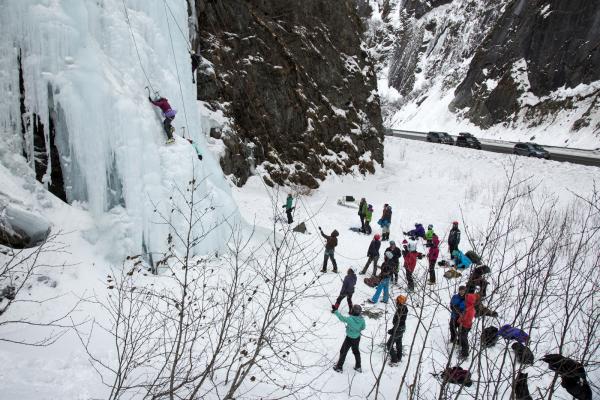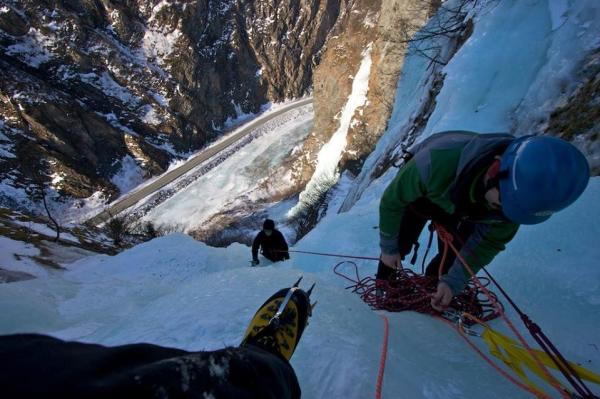Photo by Zach Clanton
A Primer On Ice Climbing
Why in the world would someone want to claw hundreds of feet up a frozen wall of water with only a plastic helmet between them and the hereafter?
Good question. Well, contrary to appearances and reputation, ice climbing is actually a pretty safe sport. It has its share of maniacal thrill-seekers, but most ice climbers just enjoy the chance to get outdoors. With the right equipment and a good guide, it’s something anyone can have fun at.
Congealed by a winter of freezing temperatures, ice can actually be very durable. If that doesn’t make you feel safe, there are different grades of ice to satisfy every skill level. You don’t have to scale Bridal Veil Falls, the world-renowned icefall along the highway to Valdez, to earn your climbing stripes. There are plenty of long, rooftop-steep routes that afford picturesque views and a rare solitude with only a little work.

Photo by Zach Clanton
These climbs are relatively safe. They’re often just a walk-up and may not even require a rope. You will need boots, crampons, ice axes, a helmet and a partner in case you get in trouble. It’s also important to consult a guide or a guidebook before heading out. Gear rentals are available in town at Valdez's local outfitting stores. Proper preparation and climbing technique can make the journey easier, and knowing how to execute a self-arrest – digging the axe into the ice or snow to stop a slide – can prevent injury.
The stakes are higher for vertical climbs, but injuries are still few and far between.
If you’re playing it safe, it works like this: The lead climber ties a rope to their safety harness, then scales upward. After getting to a resting position, they burrow ice screws deeply into the ice at a slight downward angle. They then clips one end of a double-ended carabiner, or quickdraw, to an eye in the end of the screw. The rope is clipped into the other end. If the lead climber falls, their belay partner below them, who has been paying out rope through a belay device, will brake the fall.
A lead climber generally places enough ice screws so they doesn’t fall more than 25 feet. Ice screws hold up to 2,500 pounds of force, making most lead climbs pretty safe.

Photo by Jeremy Robida
Once a lead climber reaches the end of a climb, they can set up a “top-rope” for others by securely anchoring a rope to a pair of ice screws or a tree. Top-rope climbing is a very safe way to climb vertical faces. In fact, beginning climbers often forego the lead climb altogether, and instead walk up a ridge above the ice fall to set a top-rope climb.
Though advances in technology continue to make ice climbing ever popular and safer, most climbers still follow this rule: Don’t fall.
It’s easy advice to follow. With four sharp points of contact – two ice axes and two climbing crampons – most climbers cling to vertical ice like a cat on a tree.
Of course, most people don’t land like cats, so if you’re a beginner, get a guide and stick with the easy stuff. The reward will be a good day of exercise and exploration.





